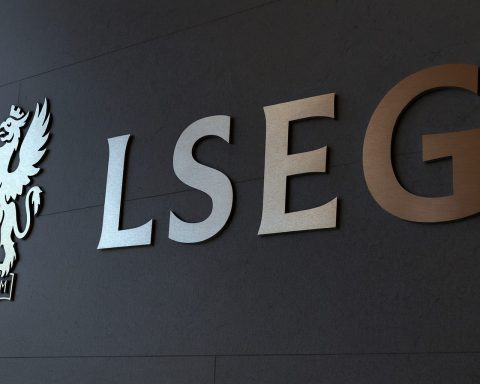Hygon Information Technology Co., Ltd. Class A shares (Shanghai: 688041, STAR Market) spent Thursday’s session on a roller coaster ride, swinging nearly 8% intraday before settling with a modest gain as AI chip enthusiasm, sector ETFs and margin financing flows drove heavy trading interest.
As a key domestic CPU and AI accelerator supplier at the heart of China’s computing‑power push, Hygon remains one of the most closely watched semiconductor names on the Shanghai Stock Exchange — and today’s tape told that story clearly.
Hygon stock price today: how 688041 traded on November 27, 2025
At the close of trading on November 27, 2025, Hygon Information Technology’s Class A shares finished at CNY 215.94, up 1.07% on the day, a gain of CNY 2.29 versus Wednesday’s close of CNY 213.65. [1]
Key trading stats for today’s session:
- Close: CNY 215.94
- Open: CNY 217.50
- Intraday high / low: CNY 232.88 / CNY 215.79
- Daily range: roughly 8% from low to high
- Volume: about 38.0 million shares, noticeably higher than the ~18.0 million “average volume” figure quoted by the Financial Times, pointing to elevated turnover. [2]
On a 52‑week view, Hygon has traded between roughly CNY 116–278, hitting its high of CNY 277.98 on September 25, 2025. [3] At today’s close, the stock sits about 22% below that peak, but still roughly 70% higher than a year ago, underlining how strongly investors have bid up China’s AI chip leaders. [4]
Today also marked Hygon’s second consecutive gain, extending Wednesday’s 3.36% rebound off recent lows. [5]
Intraday fireworks: from +8.5% spike to a cooler close
While the closing move looks tame, the intraday story was anything but:
- Around 10:00 a.m. Shanghai time, the SSE STAR Chip Index was up about 3.35%, with Hygon among its most aggressive movers, surging 8.50% at that moment. [6]
- By 10:20 a.m., the CICC Digital Economy ETF (560800) was up 1.89%, and Hygon was up 5.97%, cited as one of the leading constituents in the broader “digital China” trade. [7]
- At 10:44 a.m., the SSE 180 Index was ahead by 0.53%, with Hygon gaining 5.15% and joining other tech names among the index’s strongest contributors. [8]
Separate fund‑flow oriented notes from Sina during the morning quoted Hygon at CNY 224.70, up about 5.17%, with turnover already exceeding CNY 20 billion as mutual funds’ positions in the stock were highlighted. [9]
In other words, early trade belonged to momentum buyers and ETF arbitrage, with Hygon briefly behaving like a classic high‑beta AI proxy before profit‑taking into midday and the afternoon dragged gains back to just over 1%.
Today’s headline flow: AI chips, ETFs, and institutional positioning
1. Hygon as a core holding in AI and “digital economy” ETFs
A cluster of ETF‑focused articles on November 27 put Hygon front and center in China’s AI and digital‑economy theme:
- Digital Economy ETF – Pengyang (560800): Coverage from Hong Kong broker Huasheng Tong noted the ETF up 1.89% by 10:20, with Hygon (+5.97%), GigaDevice and Cambricon among the strongest holdings. The piece linked the move to intensifying global competition in foundation models and massive cloud capex for AI ASICs. [10]
- Digital Economy ETF – GF (159385): Another Sina note on the FuGuo Digital Economy ETF reported the fund opening 0.97% higher, highlighting Hygon’s 1.57% gain at the open as a key contributor. [11]
- Sci‑Tech Chip ETF – Bosera (588990): By 10:00, the STAR Chip Index was up 3.35% and the Bosera Sci‑Tech Chip ETF up 3.08%, while Hygon was up 8.50%, making it a major driver of the index alongside names like Cambricon and SMIC. [12]
- “Double Innovation” Leaders ETF – 588330: A Sina Fund commentary framed the Shuangchuang Leaders ETF as a flagship “new productive forces” product, noting the ETF jumped over 3% intraday. In its breakdown of leading components, the story called out Hygon as a semiconductor leader up more than 5%, in the same breath as optical‑module and AI‑infrastructure names. [13]
Layered together, these pieces reinforce a clear message: Hygon is now a cornerstone weight across multiple AI, semiconductor and digital‑economy ETFs, so flows into these products can exert meaningful short‑term pressure on the stock price — in both directions.
2. STAR‑board chip rally and the “storage super‑cycle” narrative
Another theme in today’s news is the broad‑based rally in Chinese chipmakers, driven by talk of a new up‑cycle in memory and AI‑related demand:
- A report syndicated via Jiemian and Sina highlighted that, by 10:00 a.m., the STAR Chip Index was surging 3.35%, with Hygon at +8.50% and several other chip names up 5–8%. [14]
- The same piece cited broker research arguing that AI demand is fuelling a “super‑cycle” in memory, with tight supply and rising prices across DRAM and NAND, and recommended close attention to storage inventories, pricing and AI compute demand. [15]
For Hygon, whose processors and DCUs sit in AI servers and high‑performance computing (HPC) configurations, this macro backdrop provides a supportive narrative, even though its core products aren’t themselves memory devices. Investors appear to be treating the whole compute stack — CPUs, accelerators, memory and server systems — as a linked trade.
3. Blue‑chip index inclusion: role in the SSE 180
A separate article on the SSE 180 ETF (530280) noted that by 10:44 a.m., the SSE 180 index was up 0.53%, and singled out Hygon, Foxconn Industrial Internet and others as leading gainers, with Hygon up 5.15% at that snapshot. [16]
This underlines another structural tailwind: being part of big‑cap indices such as SSE 180 pulls Hygon into more generalist and “core China” portfolios, not just specialist tech or AI funds.
4. Fund‑holding stories: Hygon’s impact on mutual fund P&L
Multiple short notes from Sina’s fund channel today spotlighted Hygon’s early‑session strength and detailed its impact on different fund managers:
- One piece highlighted that two funds managed by Changsheng Fund held a combined 130,000 shares of Hygon; based on yesterday’s close and this morning’s price of CNY 224.70, the article calculated a one‑day mark‑to‑market profit of roughly CNY 1.44 million. [17]
- Similar stories cited positions at Cinda Australia Asia Fund and Zheshang Securities Asset Management, each emphasising Hygon’s 5.17% intraday gain and around CNY 22–21 billion in turnover by ~09:40. [18]
These fund‑flow‑style articles are partly promotional for the funds themselves, but they also confirm that Hygon is widely held across active mutual funds and asset‑management products — another structural demand source, and a factor that can exacerbate swings when institutions rebalance or de‑risk.
5. Margin financing and main‑capital flows
While today’s financing data will only fully surface tomorrow, several fresh pieces looked back at November 26, offering context for today’s move:
- StockStar and other outlets reported that as of November 26 close, Hygon finished at CNY 213.65, up 3.36%, with turnover of 29.82 million lots and about CNY 6.37 billion in trading value, even as “main funds” were estimated to have net sold around CNY 11.6 million. [19]
- Another report summarising STAR Market margin data noted that on November 26, 14 STAR‑board stocks saw margin financing net purchases above CNY 50 million, including Hygon, as total margin balances on the board increased by over CNY 2 billion day‑on‑day. [20]
- A separate Sina margin‑data note earlier this week showed Hygon’s margin financing balance sitting around CNY 79–80 billion, near the 80th percentile of its past‑year levels, signalling heavy leveraged participation in the name. [21]
Taken together, today’s intraday spike and the recent margin trends underscore that Hygon is deeply embedded in leveraged speculative flows — a key reason for its high volatility and sharp intraday reversals.
Fundamentals: revenue surge, AI compute focus and the Sugon merger
Business profile and 2024 financial baseline
According to company and exchange filings compiled by LSEG and Reuters, Hygon is focused on the R&D, design and sale of high‑end processors, mainly:
- Hygon CPUs: 7000, 5000 and 3000 series
- Hygon DCUs (deep‑computing units): primarily the 8000 series, used as accelerators in big‑data and AI workloads
These chips are deployed across telecommunications, finance, internet, education, transportation and other sectors for general‑purpose computing, and in big‑data, AI and business computing scenarios for its DCU line. [22]
Financially, Hygon’s 2024 full‑year results showed: [23]
- Revenue: ~CNY 9.16 billion
- Net income: ~CNY 1.93 billion
- Net margin: around 21%
- Total assets: ~CNY 28.6 billion; total debt ~CNY 2.9 billion
That leaves Hygon with a relatively strong balance sheet and solid profitability for a growth‑stage chip designer.
2025 year‑to‑date: strong growth, heavy investment
Sector surveys of STAR‑board chip designers show that Hygon is now one of the largest revenue contributors in the group. A review of Q3 2025 earnings compiled by STAR Market Daily and Futu noted: [24]
- First three quarters 2025 revenue: ~CNY 9.49 billion, up 54.65% year‑on‑year
- Net profit attributable to shareholders:CNY 1.961 billion, up 28.56% year‑on‑year
- Contract liabilities: remained high at around CNY 2.8 billion, indicating a substantial backlog
- Prepayments and inventory: both increased quarter‑on‑quarter, as Hygon secured upstream supply and prepared for continued high demand
Broker research cited by AASTOCKS and Chinese media further broke down the Q3 numbers, noting that Q3 standalone net profit of about CNY 760 million grew roughly 13% year‑on‑year and 9% quarter‑on‑quarter, supported by strong domestic demand for AI and “indigenous” server CPUs. [25]
At the same time, a mid‑November article from DigiTimes, summarising comments from Hygon’s November 17 earnings call, pointed out that profit growth has begun to lag revenue growth due to higher R&D spending and rising component costs, even as DCU adoption and new processor upgrades deepen its role in China’s AI‑compute core. [26]
The Sugon merger: building a full‑stack compute champion
One of the defining strategic developments for Hygon in 2025 has been its planned merger with Dawning Information Industry (Sugon), a leading Chinese supercomputer and server vendor:
- On May 25, 2025, Hygon and Sugon announced they were planning a stock‑swap merger, with Hygon acquiring all of Sugon’s A‑shares by issuing new Hygon shares and raising supporting funds. [27]
- A June 11 DigiTimes article reported that the proposed deal, valued at around CNY 116 billion (US$16.2 billion), would see Hygon absorb Sugon in a share‑swap transaction to create a “full‑stack compute giant” spanning chips, servers and HPC systems. [28]
- Official disclosure documents filed with Chinese regulators describe the transaction as a major asset restructuring and related‑party deal, as Sugon is currently Hygon’s largest shareholder. Post‑merger, Sugon would delist and Hygon would remain the surviving listed entity, still without a single controlling shareholder. [29]
From a strategic standpoint, TrendForce and South China Morning Post have emphasised that the merger aims to unify chip design, system integration and supercomputing under one listed group, bolstering China’s domestic compute supply chain at a time of tightening U.S. export controls. [30]
However, the transaction remains in process rather than completed:
- An October 29 update noted that Hygon’s stock‑swap plan to absorb Sugon had “made progress”, but still required approval by both companies’ boards and shareholders, as well as China’s securities regulators, with “uncertainty” explicitly flagged. [31]
For equity investors, the merger is a double‑edged sword: if successful, it could significantly enlarge Hygon’s revenue base and deepen its integration with China’s AI and HPC infrastructure, but it also adds execution, regulatory and integration risks, and may influence capital‑structure and dilution outcomes.
Valuation: high expectations priced into 688041
Today’s closing price of CNY 215.94 implies a very rich valuation versus historical earnings:
- As of November 26, 2025, the Financial Times quoted Hygon’s trailing 12‑month P/E at about 203x, with a market capitalisation around CNY 484 billion and TTM EPS of roughly CNY 1.02. [32]
Third‑party equity analytics platforms have noted that:
- Consensus EPS forecasts for Hygon have been revised down by around 15% recently, even as some analysts raised their 12‑month price target by nearly 30% to around CNY 256, reflecting optimism about long‑term AI demand and the Sugon combination, but also highlighting that much of the story is now priced into expectations rather than current earnings. [33]
Add in the observation from DigiTimes that R&D and material costs are pressuring margins, and the picture that emerges is of a stock where investors are paying up heavily for growth and strategic positioning, not for current profitability. [34]
How today fits into the bigger picture for Hygon stock
For readers tracking Hygon Information Technology Co., Ltd. Class A stock on November 27, 2025, several key takeaways stand out:
- Price action remains extremely volatile. An intraday surge of more than 8% followed by a close just 1% higher underscores how quickly sentiment can swing in heavily‑owned AI leaders. [35]
- ETF and margin flows are crucial drivers. Hygon now sits at the intersection of AI‑themed ETFs, digital‑economy products and STAR‑board chip indices, while also attracting substantial margin financing. Those flows can amplify both rallies and pullbacks. [36]
- Fundamentals show strong top‑line growth, but profitability is under investment pressure. Revenue is growing rapidly as domestic demand for indigenous CPUs and DCUs accelerates, yet profit growth is slower as Hygon ploughs cash into R&D and inventory to secure its place in China’s AI stack. [37]
- The proposed Sugon merger is a major medium‑term catalyst and risk. If fully approved and executed, it would effectively convert Hygon into a full‑stack compute champion spanning chips to supercomputers, but regulatory, integration and valuation questions remain open. [38]
- Valuation leaves little room for error. A P/E multiple above 200x and a share price still roughly 70% higher than a year ago mean that any disappointment on growth, margins or merger progress could trigger sharp corrections. [39]
For now, November 27’s session fits neatly into the broader 2025 narrative: Hygon remains one of the flagship bets on China’s AI compute ambitions, with fundamentals, policy support and sector flows all broadly aligned — but with a level of volatility and valuation that requires investors to pay close attention to both macro AI trends and company‑specific execution.
References
1. cn.investing.com, 2. cn.investing.com, 3. markets.ft.com, 4. cn.investing.com, 5. cn.investing.com, 6. finance.sina.com.cn, 7. www.hstong.com, 8. cj.sina.cn, 9. finance.sina.com.cn, 10. www.hstong.com, 11. finance.sina.com.cn, 12. finance.sina.com.cn, 13. finance.sina.cn, 14. finance.sina.com.cn, 15. finance.sina.com.cn, 16. cj.sina.cn, 17. finance.sina.com.cn, 18. finance.sina.com.cn, 19. stock.stockstar.com, 20. www.stcn.com, 21. finance.sina.com.cn, 22. www.reuters.com, 23. www.reuters.com, 24. news.futunn.com, 25. m.aastocks.com, 26. www.digitimes.com, 27. www.trendforce.com, 28. www.digitimes.com, 29. file.finance.qq.com, 30. www.trendforce.com, 31. longbridge.com, 32. markets.ft.com, 33. gu.qq.com, 34. www.digitimes.com, 35. cn.investing.com, 36. www.hstong.com, 37. news.futunn.com, 38. www.trendforce.com, 39. markets.ft.com






